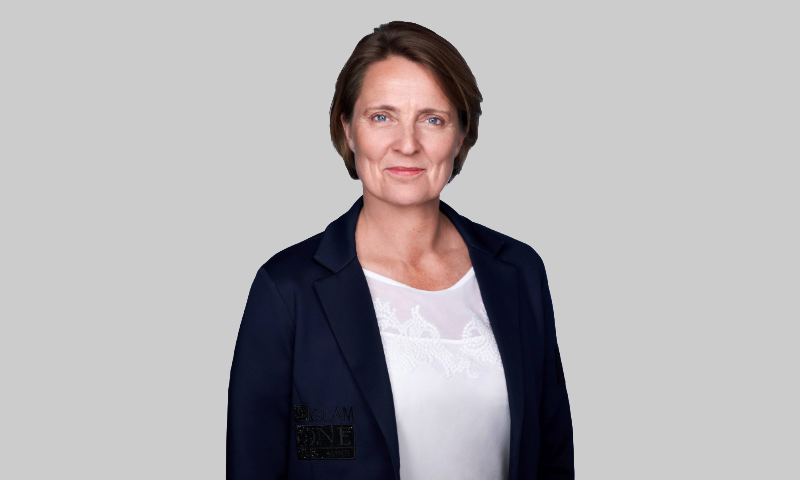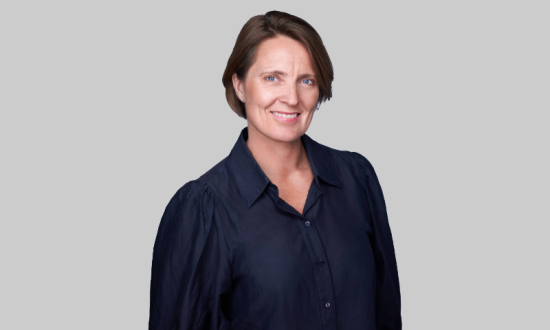Jannecke Drangert-Hveding is a CCXP, and a true believer in the “outside-in” approach to strategy and business development. She has extensive experience as a business advisor, from leadership roles and as a board member. She is the CEO of Customer C and founder of the Customer Community, a network for customer-centric leaders in Norway. She has extensive experience working with major brands in the Nordics and was previously Strategy and Transformation Lead at one of Scandinavia’s largest health tech organizations. She now sees it as her mission to support, advise, and connect true value champions out there in their efforts to transform and evolve their organizations & business models.
She is a keynote speaker as well as a judge at the World customer centricity awards as well as the European Customer Experience Awards. She strives at the challenge of getting Customer Centricity higher on the agenda on board and executive level in Norway as well as the community at large. She was founding member of CXPA (Customer Experience professionals Association) and is also the founder of The Customer Community, a Network for Customer Centric leaders in Norway.
Recently, in an exclusive interview with CXO Magazine, Jannecke shared her career trajectory, the inspiration behind establishing Customer C, insights on the impact of AI on customer experience, significant career milestone, her favorite non-academic book, future plans, words of wisdom, and much more. The following excerpts are taken from the interview.
Hi Jannecke. Can you tell us the “backstory” about what brought you to this career path in customer experience?
It wasn’t until I became the practice head of a management consultancy 20 years ago that I really began to focus on customer experience. At that time, I was leading a team of seasoned consultants, many of whom were skilled at rescuing large projects that had gone off track. But as I looked deeper, I realized that the root cause of these failures often came down to businesses making assumptions about their customers—needs, expectations—without ever testing them.
That realization sparked my journey into customer experience and customer-centricity. I started exploring the emerging methodologies and research around understanding customers more deeply, which ultimately led me to found one of the first boutique consultancies in Scandinavia focusing on a customer-driven business perspective. This was well before concepts like Design Thinking, Behavioral Science, and Customer Journeys became mainstream.
But Customer-Centric strategies, tools and concepts are only valuable if they create real outcomes for the business. It’s surprising how many organizations still do not understand how the different elements of their customers’ experience impact their business, making it difficult to prioritize effectively. This lack of clarity often leads to a significant amount of wasted effort and resources. What I would do is analyze the gap between what customers expect and what they actually receive, then define a clear North Star and guiding principles centered around customer outcomes. It’s crucial to always link customer outcomes to business outcomes to ensure that decisions are aligned with long-term value creation.
Today, as the CEO and founder of Customer C, I focus on coaching and advising businesses on how to create both customer and business value through customer-centric innovation. We work with leaders at all levels—board, executive, and management—offering proven concepts and best practices. Our role is to act as coaches, advisors, and sparring partners.
Additionally, I facilitate a network for customer-centric leaders across industries in Norway (The Customer Community), providing them with a platform to exchange ideas and insights.
What was the inspiration behind establishing Customer C? What is its mission and vision?
The inspiration for Customer C came from a growing frustration with how customer experience was often treated in boardrooms. It was seen as a tactical function rather than as a core strategic driver. Time and again, I observed that businesses approached customer experience reactively, rather than seeing it as an integral part of their overall strategy.
Many companies pay lip service to “understanding the customer” and “customer first”, but few still actually go beyond that. This often requires a quite fundamental shift to make your organisation´s systems and processes more customer-focused.
Our vision with Customer C was to create a company that helps businesses transform, to become truly Customer Centric by supporting the leaders driving that change.
Our mission is to guide companies in identifying and eliminating bad profit—those hidden areas where short-term thinking damages long-term customer relationships—and replace it with good profit, where customer value aligns with business value. We challenge executives to question their assumptions and rethink established truths, pushing them to adopt growth strategies that are built from a customer-first perspective.

Have you seen, firsthand, any AI impacts on the practice of CX? What impacts are you expecting in the next few years?
Yes, AI has already begun transforming how businesses engage with customers, but its real potential goes far beyond simple automation or chatbots. One of the most exciting developments is how AI can be used to orchestrate complex customer journeys across multiple touchpoints. Today’s customer journeys are rarely linear—they involve a range of interactions across digital and physical channels. AI has the power to bring all these pieces together, making it possible for businesses to anticipate customer needs, personalize interactions in real-time, and guide customers through seamless experiences, no matter how complex the journey may be. I believe organizations that manage to utilize AI in their Customer Journey Management in advanced but secure ways, will have a competitive advantage.
However, the key to AI’s success will be ensuring that it’s used to enhance—not replace—the human touch, so that the customer feels truly understood and valued at every point of the interaction.
What are your thoughts on gender equality and inclusion? Do you think there is a gender bias in your industry?
As customers get more and more diverse – customer centricity becomes even more important. Bias and inclusion is about much more than gender. There are certainly biases, but I prefer to focus on how we can make progress. I believe that diverse teams are essential for creating value because they bring a range of perspectives that help us better understand and solve customer problems. Inclusion leads to smarter decisions, and it’s the businesses that embrace diverse thinking that are best positioned to innovate and grow. Gender equality isn’t just about representation—it’s about creating environments where people can bring their full selves to work and contribute to delivering meaningful value for customers and businesses alike.
What has been your most career-defining moment that you are proud of?
One of my defining moments was when I decided to stop a project that was at odds with our customer-centric principles. The project would have been profitable in the short term but would have damaged long-term customer trust. The decision wasn’t about making a statement—it was about supporting the leadership team in recognizing that sometimes the best way forward is to pause and rethink. That decision left an impression, and several executives came back to work with us later, appreciating that we prioritized long-term success over quick wins. It reinforced my belief that being a trusted partner, willing to challenge and guide, is far more valuable than just delivering results for the sake of it.
How do you stay current with emerging trends and innovations in customer experience, and what resources do you rely on for inspiration and guidance?
Curiosity is my biggest resource. I stay updated on trends and developments by reading across various fields, including behavioral science, systems design, and business innovation, as well as keeping up with industry reports. I’m constantly looking for ways to enhance how businesses solve customer problems.
When we don’t find the relevant material externally, we conduct our own research at Customer C, which has proven invaluable for both us and our clients.
There’s often a difference between what’s theoretically advocated and what’s actually practiced. To bridge this gap, and when preparing the agenda for The Customer Community, I engage with both industry experts and practitioners. Conversations with leaders across industries provide practical insights into how emerging trends can be applied to create real-world value.
I’m also an active member of the CXPA and serve as a judge on the panels of the European Customer Experience Awards and the World Customer Centricity Awards. These roles inspire me and keep me informed about how top players in the field are evolving and implementing the latest innovations in CX.
What is your favorite non-academic book and why?
My favorite book is Les Misérables by Victor Hugo. It’s a powerful story about humanity, resilience, and the choices we make. What resonates with me most is the theme of redemption and how small actions can create significant impact over time. In many ways, it reminds me of how businesses operate—you make decisions every day that might seem small, but they can have a profound effect on your people, and your long-term success. It’s about understanding the complexity of human behavior and using that understanding to create meaningful outcomes.
What is your secret to striking a work-life balance?
Balance, for me, is about staying grounded in what’s truly important. I don’t seek balance in the sense of trying to split my time equally between work and life, but rather I focus on being present and intentional in whatever I’m doing. That also often means stepping back to reflect and ask myself, “Am I doing the things that create the most value, both professionally and personally?” It’s not about perfection but about finding harmony through prioritization and staying curious about what works best at different stages of life.
Where do you see yourself in the next 5 years?
In five years, I see myself continuing to support businesses in their journey toward becoming truly customer-centric. I want to help leaders remain curious and committed to improving how they solve customer problems. My role is to be an aspirational partner—one that helps companies challenge their assumptions, innovate their business models, and create long-term value by aligning their success with their customers’ needs. I hope to expand our reach, but always with the focus on being a supportive, trusted partner rather than the loudest voice in the room.
If you could give any advice to someone striving to be a CX Leader, what would it be?
Focus on outcomes and creating tangible value, both for the customer and the business. As a CX leader, your job isn’t just to improve experiences—it’s to align those experiences with business goals and deliver results that matter. But don’t underestimate the importance of navigating internal dynamics and influencing stakeholders. A big part of your role will be selling the story of customer-centricity across the organization, convincing teams at all levels that it’s not just a function but a strategic driver of growth, so that when they stay committed as the required change dawns on them.
You need to be adept at communicating the business impact of CX in a way that resonates with leadership. This means tying customer outcomes to metrics that matter to your company, whether that’s profitability, retention, or market differentiation. Being a CX leader requires more than just empathy for the customer; it requires the ability to rally people behind a shared vision and guide the organization in putting that vision into action.

